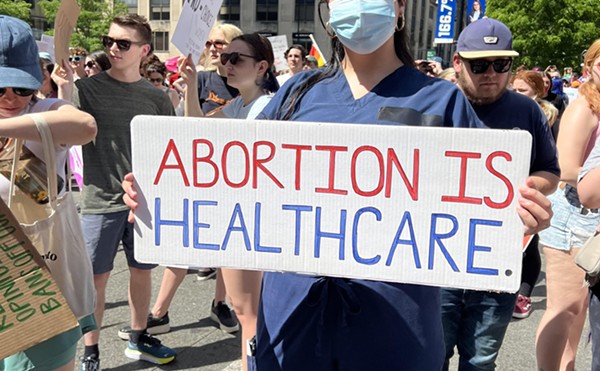|
Whatever you think of the corporate media, you probably expect that, when you're watching the news, what you're seeing is just that — news. But that's not always the case.
Cincinnati station WCPO (Channel 9) is under investigation by the Federal Communications Commission (FCC) for using video news releases (VNRs) and presenting them as if they were actual news. VNRs are commercial video segments engineered by marketing companies to promote their clients' products and agendas.
VNRs are made to look like news broadcasts and typically feature actors playing the part of news correspondents, along with product demonstrations and interviews. These segments are edited in such a way to allow television news desks to remove the actor playing the reporter and install footage of their own news reader. In December 2005, Channel 9 did this, having Clyde Gray narrate a spot for MimyX Cream, a drug used to treat eczema.
In April, the Center for Media and Democracy, which investigates the use of marketing materials in news broadcasts, broke the story on Channel 9 and 76 other television stations around the country using VNRs. Their story launched an ongoing FCC investigation to see if any laws were violated.
Hire reporters
Diane Farsetta, one of the authors of the Center for Media and Democracy report, says WCPO also used a VNR promoting flowers around Valentine's Day.
The sources of these VNRs were not disclosed during the broadcasts, as required by the FCC, she says.
While this and the eczema cream are hardly as egregious as the corporate media shilling for President Bush in 2005, they indicate a trend that calls the legitimacy of television news into question, she says.
When Farsetta contacted the stations that her group had found to be using VNRs, she was often told that it was a simple, one-time error.
"We joked here that, if that's true, then TV news must be the most accident prone industry ever," she says.
Farsetta says VNRs are a way for companies to appear more credible to consumers, "because the presumption is that the information they see during the newscast is first of all information that's been deemed interesting and also has been fact- checked."
Viewers trust their local news stations and are more likely to use products that are mentioned on the evening news, she says. For stations, it's a way to deal with budget cuts. VNRs are free.
"The situation is economics," Farsetta says. "You have television newsrooms that are being asked to do more with the same budget or even less than before."
WCPO Vice President and General Manager Bill Fee declined to comment, explaining in an e-mail that his station is working on a response to the FCC's request for information regarding the two VNRs in question.
"I do not want to have anything on the record which could be misinterpreted by the FCC until this issue is resolved," Fee wrote.
In an Aug. 20 story in The Cincinnati Enquirer, Fee said, "(The VNRs) should have been credited, absolutely."
The Cincinnati Society for Professional Journalists opposes the use of VNRs, according to Liz Carey, president of the chapter.
"It brings to question accuracy, objectivity and balance and I think it speaks a lot to the short staff of most news rooms," she says. "Money should be spent to hire reporters instead of allowing newsrooms to become vehicles for public relations departments."
When it comes to drugs such as MimyX Cream, the situation is even more troubling, Farsetta says. Channel 9 didn't run the end of the MimyX segment that listed the drug's risks, she says.
Right to know
Farsetta says it's tough to say how prevalent VNR use is among media nationwide, because it's a secretive business.
"We probably didn't catch every station that ran one," she says. "There was at least one case where there was a national network feeding (a VNR) out to its affiliates."
The report by the Center for Media and Democracy has spurred one Pennsylvania station to make a public apology for running VNRs and another, KCBS in Los Angeles, to say it will no longer use VNR content, Farsetta says.
The Radio-Television News Directors Association issued a statement Oct. 6 calling the FCC probe "an unprecedented intrusion into newsroom operations." The group asked the FCC to halt its inquiry, stating that sponsor identification is "not an issue" when money has not changed hands between the sponsor and the TV station.
FCC Commissioner John Adelstein stated in a recent press release that the investigation is necessary to protect the public interest.
"The public is misled by individuals who present themselves to be independent, unbiased experts or reporters, but are actually shills promoting a prepackaged corporate agenda," Adelstein said. "The public has a legal right to know who seeks to persuade them so they can make up their own minds about the credibility of the information presented. Shoddy practices make it difficult for viewers to tell the difference between news and propaganda."
If the FCC determines a station has violated sponsorship identification rules, it can impose fines of up to $32,500 per violation and could revoke an offender's broadcast license. Individuals involved face a fine of up to $10,000 and as much as a year in prison.
To see one of the VNRs used by Channel 9, visit www.prwatch.org/fakenews/vnrs/vnr10/010_WCPO.mov.





